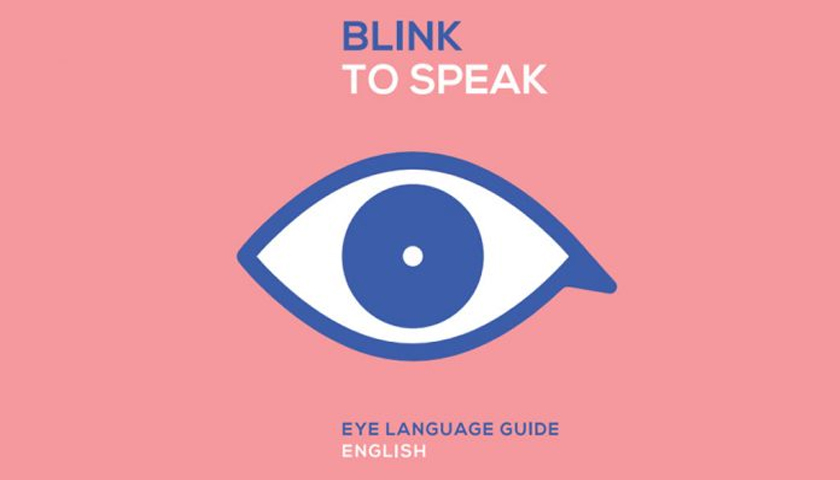We take our ability to communicate for granted. But there are over 60 million people in the world suffer from spinal cord injuries and brain strokes. Conditions such as ALS (Amyotrophic Lateral Sclerosis) and MNDs (Motor Neuron Diseases), render them partially or completely paralysed. They survive for years, bound to their beds or wheelchairs with no power to express even the smallest need or desire. Medical advances have been able to give them a longer life. But that life is stifled by silence. Even with an absolutely alert mind, they are at the mercy of others.
But with a paralysed body there is one part that doesn’t betray most patients till the very end. The eyes.
TBWA\India has set out to solve this problem with Blink To Speak: the world’s first eye language for patients who have an alert mind but a paralysed body. Blink To Speak was conceptualised, designed and developed by team of people from TBWA for a non-profit, Asha Ek Hope Foundation, and NeuroGen Brain & Spine Institute.
Using the power of eyes, the team at TBWA devised a way to help these patients. Blink To Speak uses 50 simple eye movements to build an extensive eye language. They assigned simple messages commonly needed by patients to basic combinations of eye movements. They created very easy to use sets of eye actions using the 8 alphabets of the eye language – Shut, Blink, Left, Right, Up, Down, Roll and Wink.
Starting with basic actions like Yes, No, I’m okay they can easily learn the language in a span of 2-3 months, depending on their health condition. With a simple 1 Wink they can ask their family to talk to them. And with 1 Left Wink, 1 Right Wink, 2 Blinks, they can say ‘Thank You’ to their doctor. They can even notify their family about any danger or emergency.
Dr. Hemangi Sane, the Founder President of Asha Ek Hope Foundation who is also an ALS patient added, “Blink To Speak is going to break all barriers of paralysis and help millions to express themselves.”
“With advances in medical science, we use treatments like stem-cell therapy to save these patients. But we’re not able to give them a quality life. I believe ‘Blink To Speak’ is going to benefit innumerable patients around the world,” said Dr Alok Sharma from NueroGen.
The idea to create an eye language for ALS/MND patients was conceived by Geet Rathi, a Creative Director, she then shared her idea with Parixit Bhattacharya, the Managing Partner – Creative, TBWA India who decided to create an extensive eye language for such patients who were often at the mercy of their family members to understand their needs.He got a team on board who brainstormed for months and came up with 50 eye movements and matched it to different everyday messages that the patients would want to communicate.
Speaking about the many learnings from the pilot, Sagar Jadhav, Associate Creative Director and Arshia Jain, the copywriter from TBWA India share, “We wanted to make sure the guide was user-friendly and easy to learn. So we had to ensure that no combination required them to do
“Speaking about the challenges of creating this language, Geet Rathi says, “Each permutation and combination of eye movements had to be very different from the other as well as be easy for the patients to do and remember the following day. Also, considering that many of these patients couldn’t speak or would require their caregivers to assist them in holding the book, we had to keep the design easy to understand even from a distance.”
She also said while stating the necessity of eye language, “Although there are now various assistive tech communication devices available in the market that can help both caregivers and patients communicate, these devices are extremely expensive to own. Moreover, some caretakers might find using such devices tedious, and might not know how to use them effectively.”
Parixit Bhattacharya, the Managing Partner–Creative, TBWA India, in a final message says, “We wanted to create an affordable and practical assistive tool for paralysed patients to communicate. We are proud to have created perhaps the world’s first Eye Language. Our in-depth research points to numerous uses for ‘Blink to Speak’ and we look forward to making this language a widely available tool for patients and their caregivers.”
Download Blink to Speak here. Or visit www.blinktospeak.com
